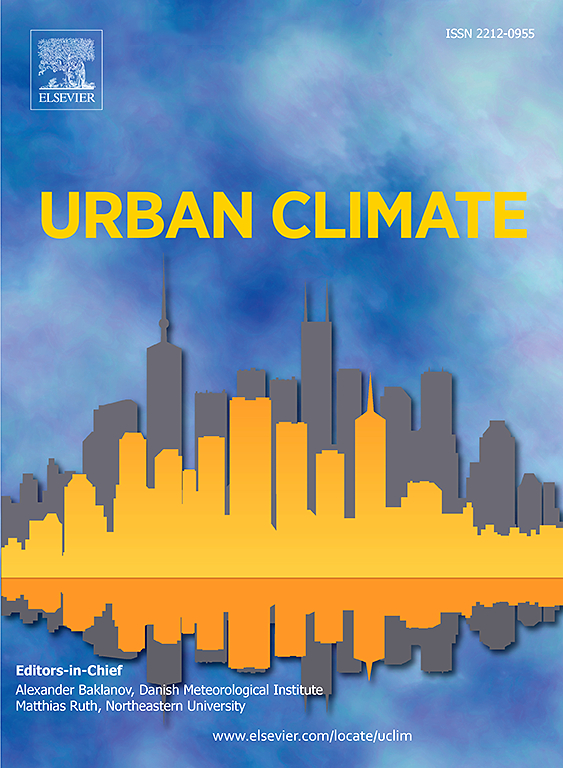A geospatial-based framework for rapid simulation of storm-induced flooding and comprehensive risk assessment leveraging GWDD and fuzzy-SWARA
IF 6
2区 工程技术
Q1 ENVIRONMENTAL SCIENCES
引用次数: 0
Abstract
With the increasing frequency of storm surges due to extreme weather, coastal protection and emergency strategies have become more critical than ever. A key element in evaluating these measures is the simulation of storm-induced flooding. As both optimization and emergency response require rapid simulations, achieving high computational efficiency is essential. In this study, a geospatial-based framework for rapid flood simulation, combined with a comprehensive risk assessment system, is introduced. The Geospatial Water Displacement and Distribution (GWDD) Model was developed, integrating GIS and Manning's equation to calculate water influx and redistribute it across affected areas. By combining spatial data with coastal vulnerability indices, Fuzzy Logic and SWARA were employed to identify flood-prone zones. Compared to traditional methods, this geospatial analysis approach simplifies physical models, increasing computational efficiency by 67.44 times while maintaining a calculation accuracy of 84.08 %, with minimal loss of precision. In addition, this paper combines multi-layered vulnerabilities such as political, economic, and environmental factors with disaster assessments, fully considering the role of vulnerability elements. It accurately identifies high-risk areas for storm surge flooding on the Leizhou Peninsula and proves the accuracy of these findings through comparison with news reports, optimizing coastal defense and emergency response strategies.
基于GWDD和fuzzy-SWARA的风暴引发洪水快速模拟和综合风险评估的地理空间框架
由于极端天气导致的风暴潮越来越频繁,海岸保护和应急战略变得比以往任何时候都更加重要。评估这些措施的一个关键因素是模拟风暴引发的洪水。由于优化和应急响应都需要快速模拟,因此实现高计算效率至关重要。本文提出了一种基于地理空间的快速洪水模拟框架,并结合综合风险评估系统。开发了地理空间水位移和分布(GWDD)模型,将GIS和Manning方程结合起来计算水的流入并将其重新分配到受影响的地区。将空间数据与沿海易损性指标相结合,采用模糊逻辑和SWARA方法进行洪水易发区识别。与传统方法相比,该方法简化了物理模型,计算效率提高了67.44倍,计算精度保持在84.08%,且精度损失最小。此外,本文将政治、经济、环境等多层次脆弱性因素与灾害评估相结合,充分考虑脆弱性要素的作用。准确识别雷州半岛风暴潮洪水高风险区域,并通过与新闻报道的对比,验证了这些发现的准确性,优化了海防和应急响应策略。
本文章由计算机程序翻译,如有差异,请以英文原文为准。
求助全文
约1分钟内获得全文
求助全文
来源期刊

Urban Climate
Social Sciences-Urban Studies
CiteScore
9.70
自引率
9.40%
发文量
286
期刊介绍:
Urban Climate serves the scientific and decision making communities with the publication of research on theory, science and applications relevant to understanding urban climatic conditions and change in relation to their geography and to demographic, socioeconomic, institutional, technological and environmental dynamics and global change. Targeted towards both disciplinary and interdisciplinary audiences, this journal publishes original research papers, comprehensive review articles, book reviews, and short communications on topics including, but not limited to, the following:
Urban meteorology and climate[...]
Urban environmental pollution[...]
Adaptation to global change[...]
Urban economic and social issues[...]
Research Approaches[...]
 求助内容:
求助内容: 应助结果提醒方式:
应助结果提醒方式:


